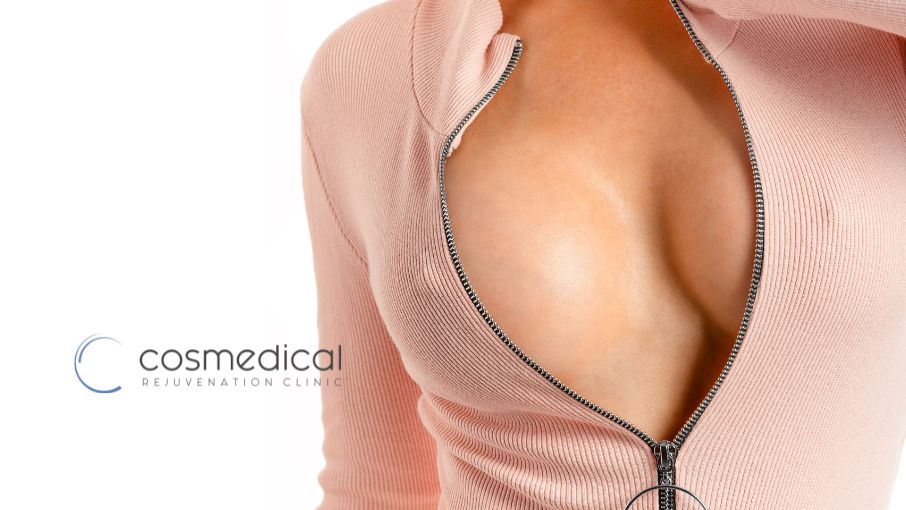
Breast Augmentation Too Far Apart
The outcomes of breast augmentation don't always meet patient expectations. One common issue is breasts that appear too far apart after surgery, leading to an unnatural look and dissatisfaction.
Issue: Why Do Some Breast Implants End Up Too Far Apart?
Breasts that appear too widely spaced post-surgery can result from various factors, including:
Natural Anatomy – Some patients naturally have a wide-set breast footprint due to the position of their pectoral muscles and breast base.
Implant Pocket Placement – Surgeons create a pocket in the chest wall to place the implant. If the pocket is positioned too laterally (toward the outer chest), the breasts may end up too far apart. This is often seen when implants are placed subglandularly rather than under the muscle.
Implant Size and Projection – Larger, high-profile implants can create excess tension on the soft tissue, pulling the breasts outward. Similarly, if implants are too small for a patient's chest width, they will not provide enough medial fullness (cleavage).
Capsular Contracture or Malposition – An abnormal amount of scar tissue can form around the implant in rare cases, causing the implant to shift outward. Implant malposition can also occur due to weak tissue or poor surgical planning, leading to lateral displacement.
Overaggressive Muscle Release – When placing implants under the muscle, some surgeons release the pectoral muscle attachments to create a more natural drape. If the release is excessive, implants may settle too far apart.
How to Fix It
Correcting breasts that are too far apart depends on the underlying cause. The most effective solutions include revision surgery, fat grafting, and strategic implant selection.
Implant Exchange and Pocket Adjustment
Repositioning the Implant Pocket – Dr. Kesarwani can modify the implant pocket to bring the implants closer to the midline. This is done by reinforcing the medial pocket with sutures or acellular dermal matrix (ADM) to prevent lateral migration (Rios et al., 2017).
Choosing a Wider Implant Base
If the original implants were too narrow for the patient's chest, selecting implants with a broader base can improve cleavage.
Fat Transfer for Medial Fullness
Fat grafting (autologous fat transfer) is a non-implant-based solution that can enhance cleavage without major surgery. This technique involves taking fat from areas like the abdomen with liposuction, processing the fat to remove impurities and then injecting the fat strategically along the inner breast to create natural fullness.
Studies suggest that fat grafting is a safe and effective method for improving breast contour, especially in revision cases (Khouri et al., 2012). However, fat grafting alone is usually insufficient to correct severe spacing and is often combined with surgical pocket modification.
Capsular Modification
If capsular contracture or implant malposition is the cause, surgeons may need to perform a capsulorrhaphy (tightening the existing capsule) or capsulectomy (removing scar tissue). This helps reposition the implants closer together while ensuring long-term stability.
Can Only Do So Much
It is necessary that breast implants are centred behind the nipples for the most natural result. For this reason, these treatments can only do so much. If a patient naturally has a large space between their breasts, it is important to note that while the space can be narrowed, there are limitations to the extent to which this can be done safely and to achieve a natural-looking result.
References
Rios JL, Ward CM, Arash Kimyai-Asadi. "Management of Implant Malposition." Plastic and Reconstructive Surgery, 2017.
Khouri RK, Rigotti G, Cardoso E, et al. "Autologous Fat Transfer for Breast Augmentation: A Multicenter, International Study." Plastic and Reconstructive Surgery, 2012.